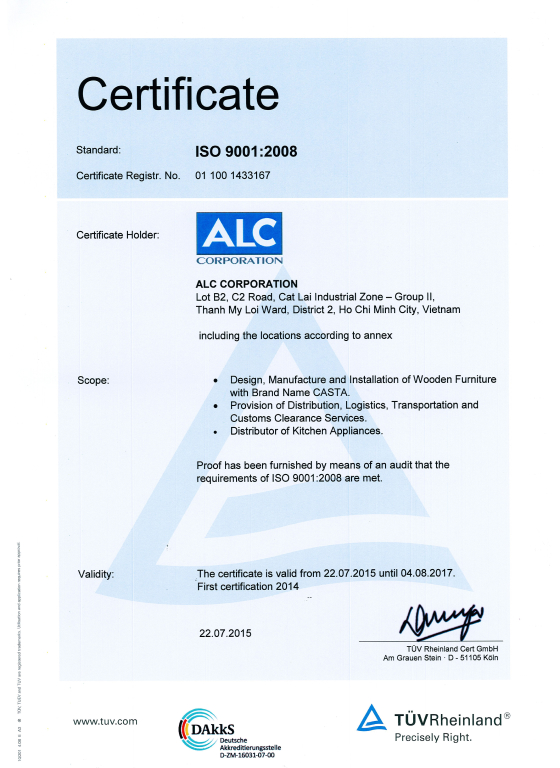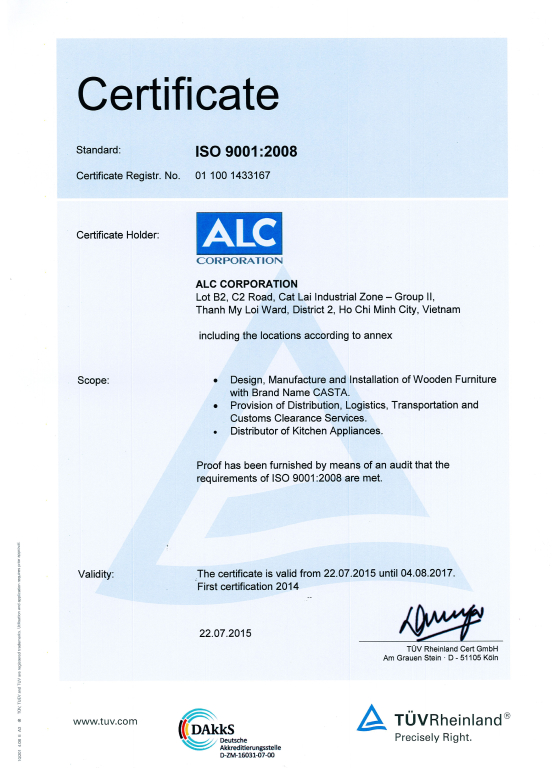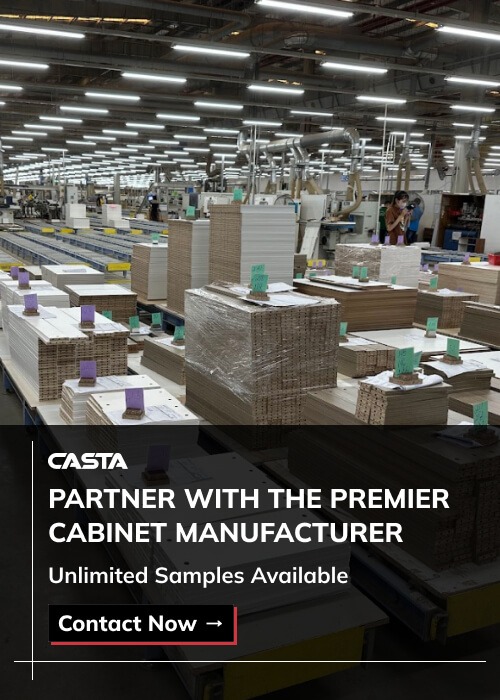MDF vs Plywood for kitchen cabinets is one of the most important decisions contractors and furniture brands must make when balancing strength, durability, and cost. The right choice impacts not only how a kitchen looks but also how it performs under daily use and humidity exposure.
For North American manufacturers and importers, understanding each material’s structural and aesthetic advantages is key to optimizing both budget and longevity. This guide breaks down their differences, benefits, and sourcing insights to help you make a data-driven choice for your next project.
Table of Contents
1. Understanding MDF vs Plywood for Kitchen Cabinets
When evaluating MDF vs Plywood for Kitchen Cabinets, it’s essential to understand not only their composition but also how their appearance, strength, and performance align with your project goals. Each material offers unique benefits that affect cabinet design, manufacturing precision, and long-term value in different ways.
1.1 What is MDF?
MDF (Medium Density Fiberboard) is made by compressing wood fibers and resin under high pressure to form dense, uniform sheets. In the debate of MDF vs Plywood for Kitchen Cabinets appearance, MDF is often preferred for its perfectly smooth surface — ideal for high-gloss paint, laminate, or lacquer finishes that require flawless flatness.
Key characteristics:
- Smooth, uniform surface: Enables seamless painted or lacquered finishes without visible grain patterns.
- Dimensional stability: Less prone to warping or cracking, ensuring consistent joinery alignment.
- Cost-efficiency: More affordable than plywood or solid wood, making it a smart choice for large-scale, budget-focused projects.
However, MDF is heavier than plywood and more sensitive to moisture. Unless sealed or treated, it can swell in humid areas — a factor that contractors must account for when designing kitchens near sinks or in coastal environments.
1.2 What is Plywood?
Plywood is engineered from multiple layers of real wood veneers, bonded under heat and pressure with alternating grain directions. This cross-laminated structure gives it excellent strength, rigidity, and resistance to moisture — key advantages in the MDF vs Plywood for Kitchen Cabinets discussion.
Key characteristics:
- High structural integrity: Suitable for heavy countertops and large cabinet systems.
- Natural aesthetic: Retains authentic wood grain, offering a warmer, more organic look.
- Moisture resistance: Available in MR (moisture-resistant) or BWP (boiling waterproof) grades, ideal for high-humidity kitchens.
- Lightweight yet durable: Easier handling and installation compared to MDF, reducing transportation and assembly time.
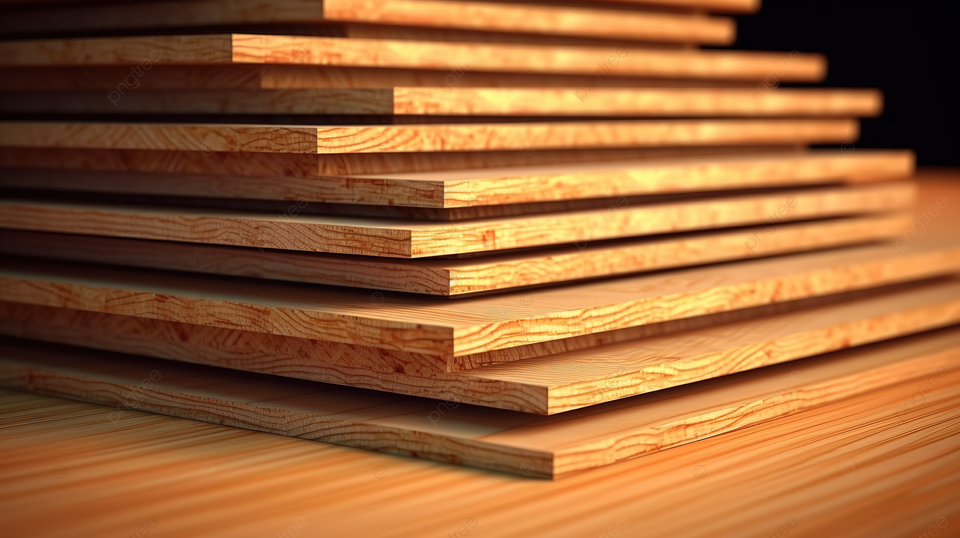
1.3 Quick Comparison Table
| Property | MDF | Plywood |
| Composition | Wood fibers + resin | Cross-laminated wood veneers |
| Strength | Medium | High |
| Moisture Resistance | Moderate | Excellent |
| Machinability | Excellent | Good |
| Finish Quality | Smooth, flawless | Natural texture, wood grain |
| Cost | $ | $$ |
| Eco Certifications | CARB, E1 | CARB, E1, FSC options |
Verdict:
When comparing MDF vs Plywood for Kitchen Cabinets, MDF excels in achieving sleek, painted aesthetics at a lower cost, while plywood outperforms in structural durability and moisture control. For North American manufacturers and contractors, a hybrid approach — using plywood for cabinet boxes and MDF for doors — often delivers the perfect balance of appearance, performance, and value.
2. Key Advantages of Plywood Kitchen Cabinet
When comparing MDF vs Plywood for Kitchen Cabinets appearance and performance, plywood stands out as the material of choice for long-term strength, moisture resistance, and structural reliability. Beyond its natural wood look, plywood delivers the engineering stability needed for both residential and commercial kitchens — especially where durability and precision matter most.
Superior Strength and Dimensional Stability
The cross-laminated veneer structure gives plywood exceptional load-bearing strength and resistance to warping. Unlike MDF, which can deform under stress, plywood maintains its form even with heavy countertops or temperature fluctuations. This makes it ideal for base units and long cabinet runs where precision alignment is critical.
Excellent Moisture Resistance
In the comparison of MDF vs Plywood for Kitchen Cabinets appearance and durability, plywood clearly leads in environments exposed to humidity. BWP (Boiling Water Proof) and marine-grade plywood use waterproof adhesives that prevent delamination or swelling — a must-have for kitchens near sinks, dishwashers, or coastal climates.
Lightweight for Easier Handling
Plywood is roughly 25–30% lighter than MDF, which translates to easier transport, faster installation, and lower labor costs. For OEM suppliers or contractors managing high-volume kitchen projects, this difference significantly improves logistics and assembly efficiency.
Longevity and Easy Repair
Thanks to its solid wood core, plywood cabinets can be re-screwed, reassembled, and refinished multiple times without structural damage — something MDF struggles with. In real-world use, plywood cabinets can last 15–20 years while maintaining both mechanical integrity and visual appeal.

3. Limitations of Plywood Kitchen Cabinets (and Solutions)
When comparing MDF vs Plywood for Kitchen Cabinets appearance, it’s important to understand that while plywood excels in strength and durability, it also presents a few challenges — especially in achieving consistent surface finishes and managing material costs. Recognizing these limitations and applying the right solutions helps contractors maintain both performance and visual appeal in every kitchen project.
Cost Variation Based on Grade
- Limitation: The cost of plywood fluctuates significantly based on its core type, veneer grade, and adhesive quality. High-end options like BWP or hardwood-faced plywood can cost 20–40% more than MDF, which may affect large-scale project budgets.
- Solution: Use premium plywood only in visible cabinet areas (such as doors or end panels) and standard-grade plywood for interior carcasses. This approach optimizes cost while preserving a high-end MDF vs Plywood for Kitchen Cabinets appearance finish.
Surface Imperfections Require Finishing
- Limitation: As a natural material, plywood can display small knots, slight color differences, or uneven grain textures — traits that may appear inconsistent compared to MDF’s perfectly smooth surface.
- Solution: Apply laminates, natural veneers, or high-quality paint finishes to unify tone and texture. This not only enhances MDF vs Plywood for Kitchen Cabinets appearance but also improves surface protection and scratch resistance.
Edge Exposure Issues
- Limitation: If edges are not properly sealed, plywood can absorb moisture, causing swelling or delamination over time.
- Solution: Use CNC-controlled edge banding and sealing to ensure all exposed edges are protected. This technique provides a cleaner, more uniform look and aligns with premium MDF vs Plywood for Kitchen Cabinets appearance standards.
Limited Finish Compatibility
- Limitation: High-gloss acrylic and ultra-matte finishes tend to adhere better to MDF than plywood, posing challenges for modern kitchen aesthetics.
- Solution: Choose specialized PET films, UV lacquers, or engineered veneers designed for plywood substrates. These materials replicate the glossy or matte look of MDF cabinets while maintaining plywood’s structural benefits.
Learn more: The Ultimate Guide to Modern Design Kitchen Cabinets
4. Plywood vs Other Kitchen Cabinet Materials
When evaluating MDF vs Plywood for Kitchen Cabinets appearance, understanding how each material performs in real-world conditions is essential. Both have their strengths — MDF is favored for its ultra-smooth paint finishes, while plywood leads in strength, durability, and moisture resistance.
Here’s how plywood compares to MDF and particle board across key performance factors:
| Material | Strength | Moisture Resistance | Weight | Cost | Durability | Ideal Use Case |
| Plywood | High | Excellent | Light | $$ | 15–20 years | Midrange & premium kitchens |
| MDF | Medium | Moderate | Medium | $ | 10–15 years | Painted cabinets |
| Particle Board | Low | Low | Light | $ | 5–10 years | Budget projects |
Analysis
When it comes to MDF vs Plywood for Kitchen Cabinets appearance, the key difference lies in both visual texture and performance under stress. Plywood’s cross-laminated veneer structure not only gives it a natural wood grain that adds depth and authenticity to kitchen aesthetics, but also ensures structural stability under humidity and heavy use. In contrast, MDF’s dense fiberboard composition offers a flawless painted finish but lacks plywood’s long-term resilience.
For projects demanding both beauty and endurance — especially in high-moisture environments like coastal homes or sink bases — plywood is the superior choice. Its balance of strength, light weight, and premium MDF vs Plywood for Kitchen Cabinets appearance makes it ideal for modular systems and large-scale manufacturing. Advanced CNC machining further enhances fit accuracy, ensuring seamless joints and consistent quality across every cabinet component.
5. Design Possibilities with Plywood Kitchen Cabinets
When comparing MDF vs Plywood for Kitchen Cabinets appearance, plywood continues to lead in both aesthetics and performance. It offers designers and manufacturers the freedom to create durable, visually rich kitchens without sacrificing functionality or sustainability.
- Modern Aesthetic Flexibility
- Plywood delivers a warm, natural wood appearance that enhances both modern and transitional kitchen styles.
- In the comparison of MDF vs Plywood for Kitchen Cabinets appearance, plywood stands out for its real wood grain and texture, while MDF relies on paint or laminate for a similar effect.
- Compatible with matte UV lacquers, high-pressure laminates, or natural wood veneers — providing near-limitless creative finishes.
- Perfect for projects that aim for a natural yet refined design language.
- Structural Adaptability
- Thanks to its cross-laminated core, plywood maintains shape under precision machining and high load — ideal for modular and handleless systems.
- In terms of MDF vs Plywood for Kitchen Cabinets appearance and structure, plywood supports detailed joinery and clean edge profiles without warping.
- Ensures seamless installation and tight-fitting components in large-scale manufacturing environments.
- Sustainable and Safe Design
- Plywood uses FSC-certified veneers and low-VOC adhesives, supporting LEED and eco-friendly construction standards.
- Compared with MDF, plywood’s natural veneer finish reduces the need for heavy coatings — improving both air quality and environmental footprint.
- For buyers concerned about sustainability, MDF vs Plywood for Kitchen Cabinets appearance tips in favor of plywood for its authentic, organic finish.

Learn more: Top Modern Kitchen Ideas You'll Love
6. How to Choose Quality Plywood Kitchen Cabinets: A 5-Step Guide
Selecting the right plywood supplier is crucial for achieving both structural reliability and a high-end MDF vs Plywood for Kitchen Cabinets appearance finish. Poor-quality materials or machining inconsistencies can lead to warping, misalignment, or costly warranty claims. Follow these five steps to ensure every kitchen project meets international standards for strength, beauty, and longevity:
6.1. Check Certifications
- Always verify certifications such as CARB Phase 2, E1, and FSC.
- These standards confirm that the plywood meets North American indoor air quality and sustainability requirements.
- Certified materials not only ensure environmental safety but also enhance your brand reputation when marketing against MDF vs Plywood for Kitchen Cabinets appearance expectations in eco-conscious markets.
6.2. Understand Material Composition
- Request a complete breakdown of the plywood’s core type (e.g., poplar, eucalyptus, or combi), adhesive resin, and veneer thickness before final approval.
- Each core material affects both the strength-to-weight ratio and the surface smoothness — factors that influence the final cabinet appearance compared to MDF.
- For example, eucalyptus-core plywood offers higher density and smoother edge profiles, ideal for achieving premium MDF vs Plywood for Kitchen Cabinets appearance in luxury projects.
6.3. Inspect Machining Precision
- Review CNC cutting, drilling, and edge-banding quality — even minor deviations can affect door alignment or panel fit.
- Check for tight joints, even edges, and smooth surface finishes.
- Precision machining not only enhances long-term durability but also ensures a flawless visual standard comparable to MDF vs Plywood for Kitchen Cabinets appearance in modern designs.
6.4. Compare Strength-to-Weight Ratio
- Match the plywood grade and thickness to the cabinet’s intended function.
- Use 18–20 mm high-grade plywood for base units or countertop support.
- Use lighter cores for wall cabinets to reduce strain and simplify installation.
- Plywood provides superior strength while remaining lighter than MDF — a major advantage in logistics and performance longevity.
6.5. Partner with a Reliable OEM Manufacturer
- Collaborate with certified OEM suppliers who offer:
- Design customization options (panel sizing, veneer types, and finishes).
- Consistent production volume and moisture-calibrated processing.
- Reliable after-sales and logistics support to reduce defects and delays.
- Partnering with a trusted OEM ensures consistent MDF vs Plywood for Kitchen Cabinets appearance quality across large orders — critical for maintaining brand reputation and client satisfaction.
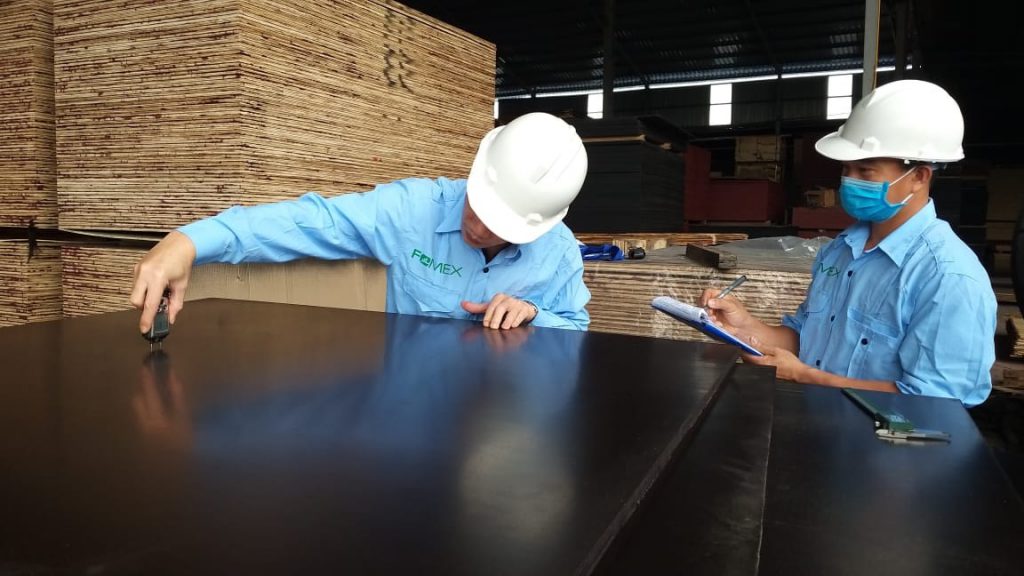
Learn more: Top rated cabinet manufacturers
7. Case Study: Delivering Plywood Kitchen Cabinets with European Precision — Casta Cabinet
When analyzing MDF vs Plywood for Kitchen Cabinets appearance, Casta Cabinet offers a real-world demonstration of how modern plywood craftsmanship can rival — and often surpass — MDF-based designs in both aesthetics and performance. As a Vietnam-based OEM supplier for North American kitchen cabinet brands, Casta integrates European precision engineering with local production efficiency to achieve outstanding results.
Key Highlights
- Production Technology: Advanced European CNC and edge-banding systems ensure ±0.1 mm accuracy on all cabinet components — achieving flawless alignment, tight joints, and consistent surface appearance. This level of precision highlights why plywood’s natural grain and strength make it the preferred choice when comparing MDF vs Plywood for Kitchen Cabinets appearance and structural integrity.
- Certifications: Fully compliant with CARB Phase 2, E1, and FSC Mix Credit standards — ensuring non-toxic emissions and eco-responsible sourcing that North American contractors demand.
- Performance: 95% defect-free shipments, supported by multi-stage inspection and moisture calibration systems that protect plywood’s natural surface texture and stability.
- Lead Time: 30–45 days port-to-door, optimized for containerized shipments across the U.S. and Canada.
- MOQ: Starting from just 20 kitchen sets, ideal for both boutique brands and large distributors scaling efficiently.
Why It Matters
Casta’s blend of Vietnamese manufacturing agility and European-grade quality control allows cabinet brands to achieve premium results without premium costs. In terms of MDF vs Plywood for Kitchen Cabinets appearance, Casta’s plywood cabinets showcase the depth, warmth, and character of real wood grain — elements MDF cannot fully replicate even with advanced laminates.
By ensuring consistent edge-banding, smooth finishing, and precise joinery, Casta provides contractors and OEM partners with cabinetry that not only performs exceptionally but also delivers the authentic, high-end visual appeal that defines today’s modern kitchens.
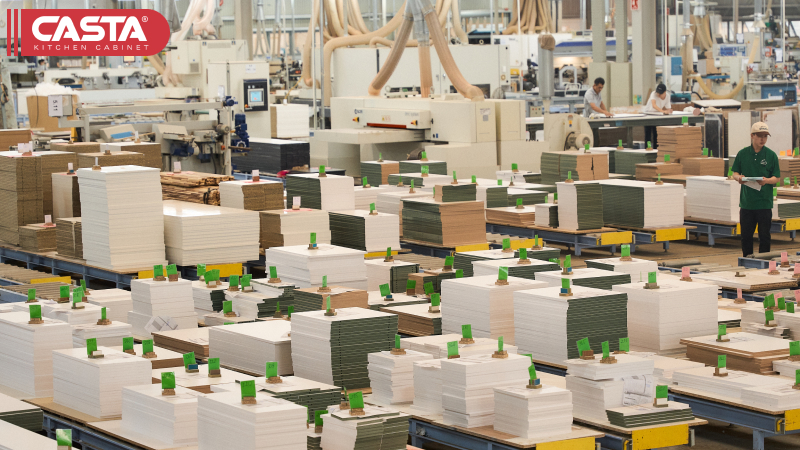
Learn more: Casta’s outstanding international projects
8. Conclusion
When comparing MDF vs Plywood for kitchen cabinets, the choice ultimately depends on your project’s priorities.
- Choose MDF for smooth, painted surfaces and budget-conscious builds.
- Choose Plywood for structural strength, moisture resistance, and long-term ROI.
For bulk manufacturing and OEM sourcing, plywood remains the superior choice — balancing durability, design versatility, and environmental compliance.
By partnering with certified manufacturers like Casta Cabinet, contractors and brands can achieve European-grade precision at competitive costs — ensuring every kitchen built today stands the test of time tomorrow.
9. Frequently Asked Questions (FAQ)
Is MDF or Plywood better for kitchen cabinets?
Are MDF cabinets safe for homes?
How long do MDF and Plywood kitchen cabinets last?
Can MDF be used in humid areas like near sinks?
Why are plywood cabinets more expensive than MDF ones?

Plywood Kitchen Cabinets: Pros and Cons Explained for Contra...
Plywood kitchen cabinets are now one of the most preferred options in modern kitchen manufacturing, combining durability...
11/12/2025 | David Nguyen

Best Italian Kitchen Cabinets: Modern Design, Precision Craf...
Italian kitchen cabinets represent the gold standard in modern kitchen design — celebrated for their craftsmanship, slee...
10/29/2025 | David Nguyen
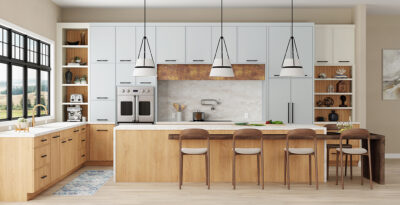
European vs American Kitchen Cabinets: Key Differences &...
European vs American kitchen cabinets is a core decision for anyone specifying cabinetry for modern buildings or homes. ...
10/27/2025 | David Nguyen
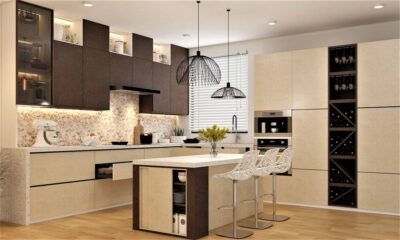
Best European Style Kitchen Cabinets for Modern Homes & ...
European style kitchen cabinets embody modern elegance through minimalist design, advanced engineering, and refined mate...
10/24/2025 | David Nguyen
Contact us
Casta is always ready to listen and answer all customers' questions

